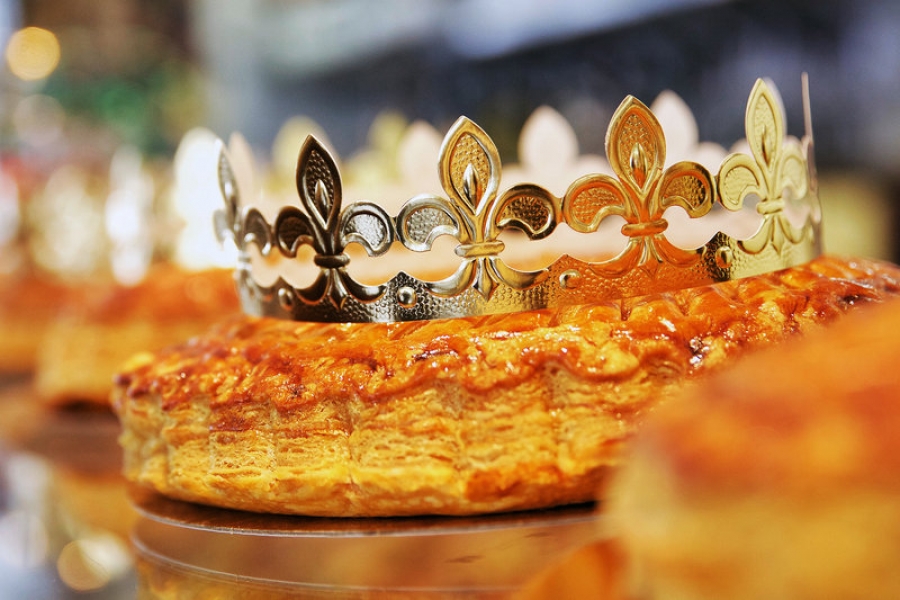Who goes under the table? No, it’s not some new Parisian parlor game, but the celebration of Epiphany. Like every year, all of France is getting ready to “draw kings” in a few days’ time with the famous galette des rois (King Cake). The yearly tradition starts on January 6th and runs for several days. All French kids dream of the same thing; getting that one piece of cake that hides the magic trinket that will earn them the right to be crowned king.
The Galette des Rois is a typically French cake baked in celebration of the Epiphany and traditionally sold and consumed a few days before and after that date. The recipe depends on the region. In Southern France, the King cake is a brioche with candied fruit, flavored with orange blossom; whereas the in north, its more typically a puff pastry cake filled with marzipan, known as the parisienne.
The tradition is to hide a trinket (called the fève) somewhere in the cake before baking. The trinket is typically a small ceramic object. Whomever is lucky enough to be served the slice with the coveted trinket, is named king or queen for the day and gets to wear the gold-colored paper crown that comes with the cake. When there are several children present, tradition has it that one child (by default, the youngest) child goes under the table and shouts out whom each piece is for, as the cake is sliced.
-Who’s this one for?
- for Clotilde.
- and this one?
- for Louisa.
…and so on. This is supposed to keep everything fair so that everyone has the same chances of biting into the trinket. French dentists will tell you more teeth are chipped during Epiphany than any other time of the year.
Etymology: the word epiphany comes from an ancient Greek word meaning “manifestation” or “appearance”. In Christian religion, Epiphany corresponds to the day when the Three Wise Men, guided by starlight came upon the newborn baby Jesus in a manger. To celebrate the arrival of the newborn King, the Three Wise Men offered gifts of gold, frankincense, and myrrh.
Why a cake? The galette des rois is a typically French tradition dating back to the 13th century. The cake would be sliced into as many pieces as there were guests, plus one. The leftover slice, called the part du Bon Dieu (“the Good Lord’s piece) was reserved for the first poor person who happened to pass by.
Why hide something inside the cake? In the 11th century, the Romans would choose a chief by hiding a gold coin in a piece of bread. Poor people who wanted to emulate this would hide a dry bean instead (fève is a French word for bean). In the 1870’s the bean gave way to a little porcelain figurine representing Jesus or a saint. Today the fève often depicts a modern-day TV or cartoon hero!!
Epiphany is also a time of fierce competition among French chefs to bake the best or most original galette de rois in Paris and earn their claim to fame in the press and the hearts of Parisians.
Amusez-vous bien ! Chantal








